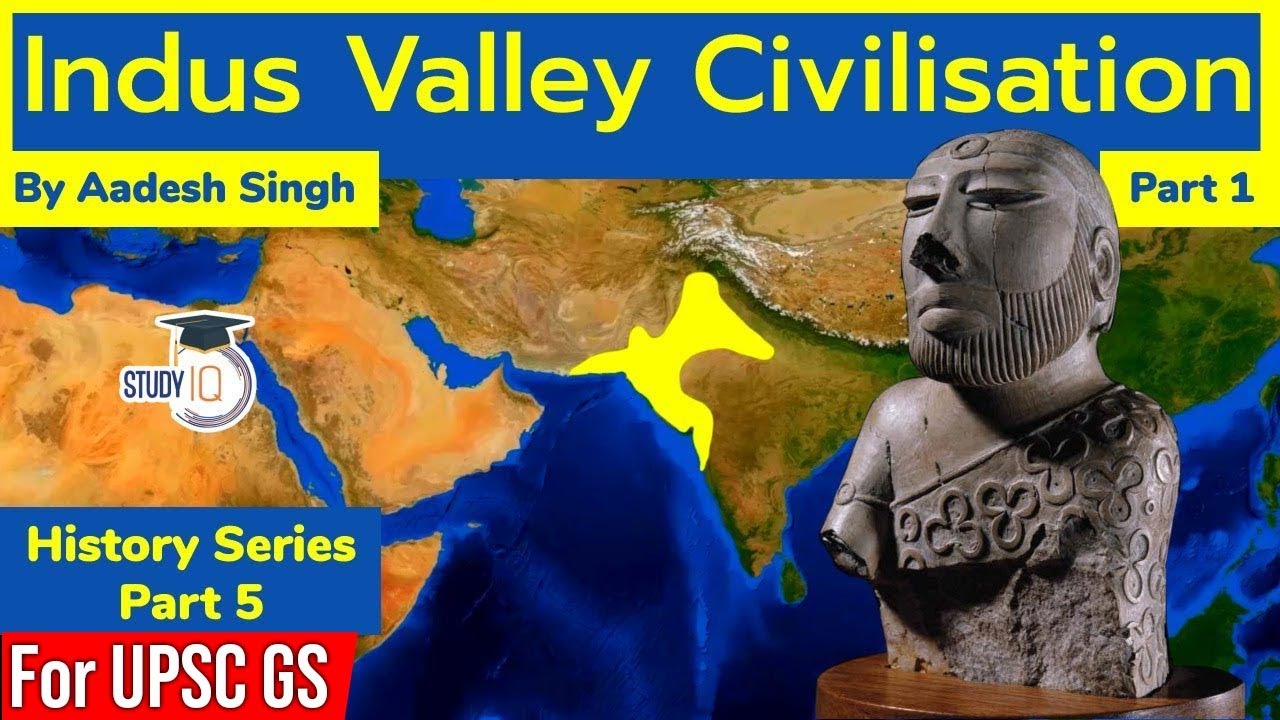Dholavira Indus Valley Civilization UPSC
Summary
TLDRThis video explores Dholavira, a key site of the Indus Valley Civilization located on Khadir Island in Gujarat, India. Discovered in 1967 and excavated until 2005, it became a UNESCO World Heritage Site in 2021. The site showcases advanced water management systems, including interconnected reservoirs, essential for surviving the drought-prone region. Dholavira's unique layout features a Citadel, Middle Town, and Lower Town, with distinctive architecture using sandstone. Notable discoveries include a ceremonial ground and a significant signboard with undeciphered inscriptions, reflecting the region's rich cultural and engineering heritage.
Takeaways
- 🏺 Dholavira is a significant archaeological site of the Indus Valley Civilization located on Khadir Island in Gujarat, India.
- 🔍 Discovered in 1967, excavations at Dholavira began in 1989 and continued until 2005, with UNESCO recognition granted in 2021.
- 🌊 Historically, Dholavira was likely accessible by boats due to higher prehistoric water levels, despite being far from the sea today.
- 🌧️ The region receives less than 160 cm of rainfall annually, making it drought-prone and necessitating advanced water management systems.
- 💧 Dholavira's water management includes 16 reservoirs and dams on seasonal rivers, providing water for drinking, irrigation, and bathing.
- 🏛️ The site features a unique urban layout with a citadel, lower town, and a larger middle town, which is not found in other Harappan sites.
- 🕌 The citadel houses large administrative and ritual buildings, while the middle town includes spacious homes for affluent families.
- ⚽ A ceremonial ground and small stadium at Dholavira represent some of the earliest evidence of ceremonial and recreational practices.
- 🪨 The architecture prominently uses sandstone, setting Dholavira apart from other sites that predominantly utilized burnt bricks.
- 📜 The 'Fallen signboard' found at Dholavira features large gypsum inscriptions, possibly indicating the city's name or ruler, although it remains undeciphered.
Q & A
What is Dholavira and its significance in the Indus Valley Civilization?
-Dholavira is an important archaeological site of the Indus Valley Civilization, located on Khadir Island in the Rann of Kutch, Gujarat. It was discovered in 1967 and excavated between 1989 and 2005. In 2021, it was designated as a UNESCO World Heritage Site.
Who discovered Dholavira, and who directed its excavation?
-Dholavira was discovered by JP Joshi, and its excavation was directed by ARIS Bisht.
What environmental challenges does Dholavira face today?
-Currently, Dholavira is far from the sea and experiences low water levels, making the area drought-prone, with less than 160 centimeters of rainfall annually.
How did the inhabitants of Dholavira manage water scarcity?
-The people of Dholavira developed an impressive water harvesting and management system, constructing 16 reservoirs and tanks, and building dams on seasonal streams to channelize water.
What are the different sections of Dholavira, and how do they differ?
-Dholavira consists of three sections: the Citadel, the Lower Town, and a Middle Town. The Citadel contains large administrative and ritualistic buildings, the Lower Town shows evidence of various crafts, and the Middle Town, larger than the others, likely housed well-to-do families.
What is unique about the architecture found at Dholavira?
-Dholavira features significant use of sandstone in its architecture, setting it apart from other Harappan sites that primarily used burnt bricks.
What is the significance of the ceremonial ground found at Dholavira?
-The ceremonial ground at Dholavira is an expansive open space possibly used for rituals, and it includes a small stadium, which is considered the earliest evidence of such a structure.
What is the 'Fallen Sign Board,' and why is it important?
-The 'Fallen Sign Board' is a significant find at Dholavira, featuring 10 large characters made of white gypsum. Although the inscription remains undeciphered, it may represent the city's name or the ruler's name.
What types of crafts were practiced in the Lower Town of Dholavira?
-The Lower Town of Dholavira showcases evidence of various craft activities, including bead making, shell working, and pottery, indicating a vibrant artisan community.
What burial practices are indicated by the symmetry observed outside the fortification of Dholavira?
-The symmetry outside the fortification suggests that the inhabitants of Dholavira practiced megalithic burial practices.
Outlines

هذا القسم متوفر فقط للمشتركين. يرجى الترقية للوصول إلى هذه الميزة.
قم بالترقية الآنMindmap

هذا القسم متوفر فقط للمشتركين. يرجى الترقية للوصول إلى هذه الميزة.
قم بالترقية الآنKeywords

هذا القسم متوفر فقط للمشتركين. يرجى الترقية للوصول إلى هذه الميزة.
قم بالترقية الآنHighlights

هذا القسم متوفر فقط للمشتركين. يرجى الترقية للوصول إلى هذه الميزة.
قم بالترقية الآنTranscripts

هذا القسم متوفر فقط للمشتركين. يرجى الترقية للوصول إلى هذه الميزة.
قم بالترقية الآنتصفح المزيد من مقاطع الفيديو ذات الصلة

Peradaban Kuno di India

Sejarah Bangsa Arya dan Bangsa Dravida Peradaban India Kuno | Satyaloka

Hiphop Tamizha - #Tamizhi | Episode 5 | Indus Valley Civilization

Indus Valley Civilization Part 1 - Ancient India History for UPSC | Harappa Civilization

Indians | Ep 1: The Harappans | A Brief History of a Civilization

Lost Cities of the Ancient Indus Valley Civilization - Full Documentary
5.0 / 5 (0 votes)
